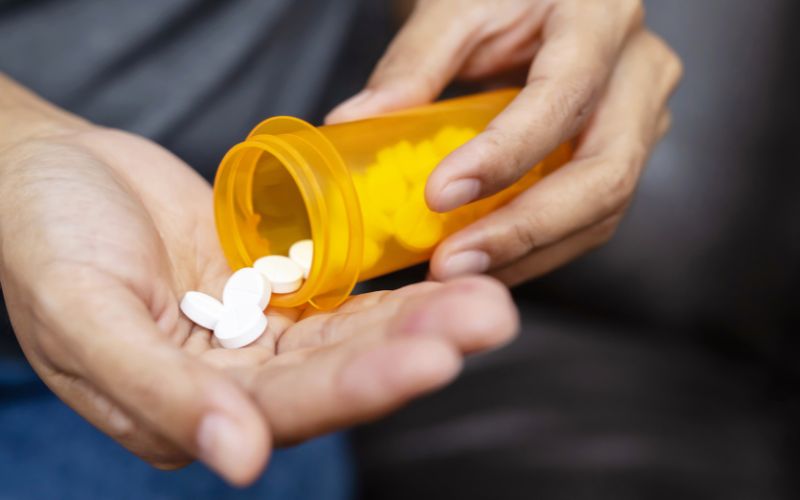
- Details
- By Levi Rickert
Opinion. In recent weeks, national headlines have told of the upsurge in Covid-19 cases. Experts tell us Covid is now a societal norm. Much like the common cold or winter flu, there will be seasonal upswings in Covid cases.
It hit home for me this past week. On Tuesday, I arrived home from the office shortly before 6 p.m. Feeling what I thought was a head cold coming on, I went to bed and slept until 11 p.m. With four meetings on my calendar, I went into the office on Wednesday but left by 3 p.m. Still thinking it was nothing more than a head cold, I went right to bed to take a nap. I got up and made some chicken soup, ate it, and then went back to bed early.
On Thursday morning, feeling worse, I took a Covid test, which turned out to be positive. I immediately called the Indian health clinic I go to in my hometown to see if I could get prescribed Paxlovid, an antiviral treatment that includes two separate medications packaged together.
I did so without hesitancy because I was prescribed the treatment when I had my first bout of Covid in August 2022. You take three pills in the morning and three at night for five days and it’s been shown to be effective in stopping the virus within the body.
Given my positive experience with the treatment, I was surprised to read an article in the New York Times under the headline of “Paxlovid Cuts Covid Death Risk. But Those Who Need It Are Not Taking It” on Thursday. The article was based on a study by the National Health Institutes of a million high-risk people with Covid. The study found that only about 15% of those eligible for Paxlovid took it even though it cuts the risk of death from Covid by 73%.
The authors concluded that if 50% of those eligible had taken it, up to 48,000 deaths could have been prevented.
The research indicated it was people’s lack of awareness of the drug, but reluctance sometimes “comes from doctors worried about interactions with other drugs and people wary of a possible rebound case or the metallic aftertaste.”
I will admit there is a metallic aftertaste that comes as a side effect of Paxlovid. But, my logic tells me the after taste is well worth the alternatives.
Covid-19 was devastating on Indian Country. According to the Centers for Disease Control and Prevention (CDC) from 2019 t0 2021 life expectancy among Native Americans fell from 71.8 years to 65.2 years. Covid was mostly responsible for the drastic reduction in life expectancy.
There are several reasons Covid is a brutal killer among Native Americans, including the vast health disparities our people face when it comes to heart disease, diabetes, and hypertension. High rates of poverty, inadequate healthcare, and long distances to travel to get healthcare contributed to the devastating impact of Covid on Native Americans.
Too many Native Americans have died as a result of Covid-19. Family and friends are now gone because of the pandemic.
In the past, I haven’t divulged my personal medical experiences with Native News Online readers. But, after reading the New York Times article, I felt it almost a tribal community obligation to share my positive experiences when using Paxlovid.
While I have some of the vulnerabilities (that I will not share) that put me at high risk from Covid, I feel very fortunate that I regularly go to the Nottawaseppi Huron Health Clinic in my hometown. The clinic is operated by the Nottawaseppi Huron Band of the Potawatomi, a federally recognized tribe that receives Indian Health Service reimbursement for serving tribal citizens from other federally recognized tribes.
I feel fortunate I was able to pick up a five-day course of Paxlovid within an hour of testing Covid-positive. I did so without hesitancy.
I am already feeling on the road to recovery, and I am looking forward to complete healing.
To be clear, please consult with a physician before you make a decision about using Paxlovid or any treatment if the need arises.
Thayék gde nwéndëmen - We are all related.
More Stories Like This
Native American Mothers Deserve to LiveTechnology Rooted in Tradition is Strengthening Cherokee Nation
The Lumbee Tribe of North Carolina: #575
Tribes Do Not Need a Greenlight to Build Renewable Energy
Law Should Not Get in the Way When "Manifest-ing Destiny"
Help us defend tribal sovereignty.
At Native News Online, our mission is rooted in telling the stories that strengthen sovereignty and uplift Indigenous voices — not just at year’s end, but every single day.
Because of your generosity last year, we were able to keep our reporters on the ground in tribal communities, at national gatherings and in the halls of Congress — covering the issues that matter most to Indian Country: sovereignty, culture, education, health and economic opportunity.
That support sustained us through a tough year in 2025. Now, as we look to the year ahead, we need your help right now to ensure warrior journalism remains strong — reporting that defends tribal sovereignty, amplifies Native truth, and holds power accountable.
 The stakes couldn't be higher. Your support keeps Native voices heard, Native stories told and Native sovereignty defended.
The stakes couldn't be higher. Your support keeps Native voices heard, Native stories told and Native sovereignty defended.
Stand with Warrior Journalism today.
Levi Rickert (Potawatomi), Editor & Publisher


